Summary
Social determinants of health can shorten healthy life expectancy by longer than other risk factors, such as high blood pressure or obesity. Therefore, organized efforts are needed to diminish health inequalities and promote the overall well-being of vulnerable populations. Aliis Vivere is a group of students from different backgrounds, such as medicine, psychology, social work, anthropology, amongst others, which engages in solidarity actions to promote health and well-being of all, regardless of age, gender, origin, socioeconomic status, or any other condition. The group conducted a participatory health census in marginalized and vulnerable communities, as well as communities facing disaster situations, in order to identify major health challenges and offer appropriate assistance to promote physical, social, and psychological wellbeing. The aim of this project is to expand these actions to other communities and implement a series of longitudinal interventions, designed and planned with the health census. Our goal is to have an impact from an intersectoral and interprofessional point of view with divided responsibilities amongst the main stakeholders: the government, academia, civil society and, as a central component, the community itself.
Introduction
The social determinants of health are conditions which can heavily influence people’s life expectancy and health. These include social exclusion, employment conditions, education, and access to health services. However, these aspects are often overlooked by health professionals, and public policy and multi-disciplinary interventions are needed to diminish health inequalities, especially in vulnerable communities or during disaster situations.
Poverty and social inequality shorten a healthy life expectancy by longer than other risk factors, such as high blood pressure, obesity, and alcoholism (1). In Mexico, 43.6 percent of the population is considered poor (2) and 9.4 million live in conditions of extreme poverty. Moreover, it is worth noting that some social groups suffer from greater marginalization, such as indigenous populations, where 77.6 percent are considered poor (3). Therefore, efforts to promote health and wellbeing within this country’s populations should focus on the social determinants of health to improve public health conditions.
The Mexican population faces an epidemiological paradox, because it presents both diseases that are specific to developing countries, such as infectious vector-borne diseases, acute diarrheal diseases, and acute respiratory illnesses, but also chronic degenerative conditions which are specific to developed countries, such as diabetes, high blood pressure, metabolic syndrome, among others. Chronic, non-communicable diseases are responsible for most deaths worldwide, particularly among adults over the age of 40 (3).
In Mexico, an important factor that contributes to health inequality is the limited access to health services, as well as their quality. This is a challenge especially for those who are not insured by the IMSS (Instituto Mexicano del Seguro Social) or ISSSTE (Instituto de Seguridad y Servicios Sociales de los Trabajadores del Estado). Although the Seguro Popular has provided extended coverage for more than 50 million people (3), it is true that the services provided by this insurance are not sufficient to provide adequate medical services.
The previous considerations pose great challenges which make it harder to achieve international goals to ensure healthy lives and promote wellbeing for all. The Mexican Magna Carta, Article 4, establishes that “All people shall have a right to health protection. The law will define the basis and modality for access to health services…”. This leaves governmental administrations with a titanic task to tackle in order to reestablish and maintain health services for the entire population.
Unfortunately, the current health system’s efforts are focused on palliative care instead of prevention. They are focused on treating diseases and their complications, instead of preventing their occurrence by addressing the social determinants of health.
We believe that by creating social conditions which promote health, as well as empowering populations and encouraging interventions focusing on primary prevention, we can solve some of the challenges we face in regards to public health inequalities. Therefore, we propose a new health system which ensures access to health services for all, starting by mobilizing students, who will be the health professionals of the future.
Aliis Vivere (to live for others) is a group of students from different backgrounds that formed in order to promote health and wellbeing from an interdisciplinary perspective. It was formed in October, 2014, at the Faculty of Medicine of the National Autonomous University of Mexico (Universidad Nacional Autónoma de México, UNAM), following the disappearance of 43 students in Ayotzinapa. The group organized emergency brigades to offer health services, while also raising awareness about the sociopolitical context the Mexican students were facing at the time. The Aliis Vivere group visited different mercados (marketplaces) in Mexico City, such as “La Bola” in Coyoacán; “Mercado de San Nicolás” in Magdalena Contreras; and “Mercado el Molino” in San Lorenzo Tezonco, Iztapalapa. The group, consisting largely of medical students, conducted primary prevention efforts by taking people’s blood pressure, performing screening activities such as quick urine tests, and taking capillary blood glucose measurements. Additionally, the students offered risk factor workshops and free medical consultations.
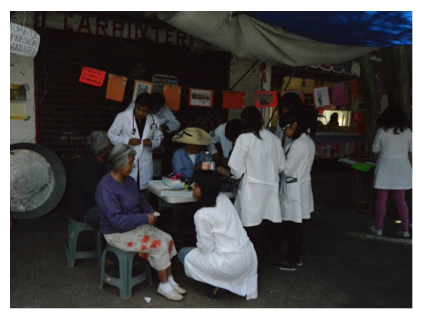
Volunteers at a popular market.
Later, following the two earthquakes that devastated several regions of Mexico on September 7 and 19, 2017, students from different backgrounds, such as psychology students, social workers, graphic designers, architects, and anthropologists joined the group in a solidarity effort to promote health and wellbeing during this disaster situation in Mexico City, Morelos, and Oaxaca.
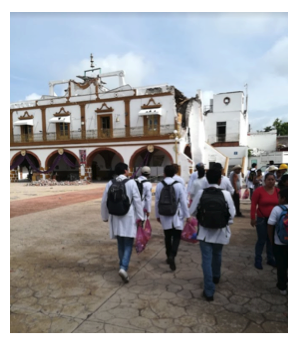
Jojutla, Morelos and the volunteers.
The activities organized by the group transcended the clinical sphere. Although the group continued offering free medical consultations and provided aid to the local authorities to perform a screening of most common diseases, the group also organized recreational and educational activities, and provided psychological first aid.
In Oaxaca, Aliis Vivere intervened in two vulnerable communities of the Istmo de Tehuantepec, called Reforma de Pineda and Ejido Revolución on November 20. Reforma de Pineda, Oaxaca, is a municipality of approximately 2,800 inhabitants and 1,100 houses, of which 800 were completely destroyed by the earthquake. It has only one health center and, therefore, 81.5 percent of the population has no access to health services. 13.5 percent of people are illiterate, and 8.27 percent of the municipality’s population is of indigenous origin. 10 percent of homes have no basic services and 69 percent of the population lives in poverty conditions.
The Ejido Revolución of November 20 has approximately 300 inhabitants. It is a rural community, with a high index of marginalization. Although it has a health center, no one is in charge of it. This means that 100 percent of the people in this municipality do not have access to health services. Most homes have no basic services.
The intervention in these two communities in Oaxaca were centered on a participatory appraisal of the current health situation, where the students collaborated with local authorities, the local healthcare jurisdiction, if present, and the local population. The medical students provided free medical consultations in local health centers, with the help and guidance of responsible doctors and nurses. They also distributed medicine for people who had interrupted their treatment due to a lack of resources.
This participatory health appraisal took the social determinants of health into account, in order to create a wider outlook on local health risks. The members of the Aliis Vivere group collected information regarding the population’s access to basic services, such as clean water and health insurance coverage. It also included mental health measures, such as a quick neuropsychological assessment of the geriatric population, in order to recognize a probable cognitive impairment or dementia, and to detect probable depression or anxiety disorders.
The group organized additional activities to promote social and psychological wellbeing, such as health prevention workshops, football matches, and other physical activities, sex education workshops, and activities with children conducted by the participating psychologists. These included the reading of an interactive book with children, in order to process the consequences of the natural disaster they had endured, and activities to recognize and manage different emotions.
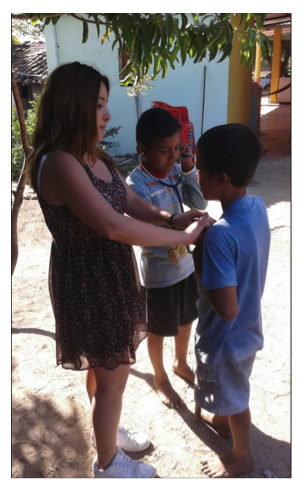
Volunteer of Reforma de Pineda.
Rationale
The Sustainable Development Goals established the path for governments to follow all over the world. Some of these goals include ending poverty and ensuring healthy lives, as well as promoting well-being for all, at all ages. Because the social determinants of health have a greater impact on life expectancy than other risk factors, we believe that public health interventions should adopt an all-encompassing, holistic approach to diminish social inequalities and ensure access to health services for all, especially to vulnerable populations.
Objective
Create an organized response from the youth, with the support of academia, promoting a methodological and systematic approach, that allows the realization of an integral health diagnosis of the most vulnerable communities, to design a response to all needs, focusing on the social determinants of health, with shared responsibilities that put each person as the priority for any intervention.
Methodology
Many years ago, universities and young professionals have been part of the incomplete efforts to attack problems that are very big and that require very complex planning, with clear obrjectives, systematized methodology, and result in analysis to generate an impact on the communities, always putting the needs and opinions of the person at the cente.
With the new government that has been creating new opportunities for the articulation of the principal actors of our society, we will bring support with no precedence to the governmental efforts to help improve our country.
The Collective Aliis Vivere, with all our past experiences of the community work that we had gathered in the past years, focuses its main objective in the recuperation of the communities, from a scientific point of view without leaving apart the cultural, social, and participative role that people must have in order to manage not only the process of illness, but also take part in the wide spectrum of the primary health care as the main point of interest for our interventions.
Methods
Election of the Community
This part of the process is the determinant for identifying the correct implementation, planning, and impact that is expected, and has to obey to the capacity and resources that the collective obtains, as well as the contact with the local authorities and the community itself.
As part of the efforts that have been made by Aliis Vivere group, it has been proposed to the principal of our Faculty of Medicine, Dr. German Fajardo, the implementation of a pilot with communities of the highest grades of vulnerability and margination in Mexico City and the municipalities that are around the city, while ensuring that the project grows progressively to amplify the number of communities in the middle-long term.
The sub secretariat of Integration and development of the Ministry of Health, Dr. Ana Cristina Laurell, in the first six months of her administration, has done a very complete census of the human resources, as well as the need for infrastructure and access to basic services in the eight states of the southeast region of the country, which are the poorest and amplify the project to the universities and communities in this region as one of the main objectives of the project.
The process for the selection of the community has to be done with the permission of the local authorities, to make an agreement and analyze the viability of the proposals, the applicability of the project, and the felt needs of the authorities. Yet, among everything, the obtaining of data needed for the planning of the diagnosis and the posterior interventions, with adequate financial planning are in order to make the group sustainable so that it does not require form any resources from the community,
The establishment of agreements and the setting of responsibilities of the principal stakeholders is a key component before the election of the communities, beacause it is needed to count the warranty of the team that would give the communities security, surveillance, and advisory from the local authorities. In addition, this first contact with them will help to establish a follow up plan and the activities that would be responsibilities and limitations that each group would have.
Preparation of the Team
The first step that has to be accomplished in our proposal is the reunion of a team of students, young professionals, and experienced persons, prepared to interact and the creation of a responsible mechanism that is sustainable that would permeate various generations and can allow follow up the actions to be done.
The project looks forward to organizing with the universities to promote the creation of a community social service program of health professionals, like other scientific professions, both humanitarian and artistic, to promote the multidisciplinary and interprofessional approaches in the communities.
The organization of a team in which health professionals like medical doctors, nurses, psychologists, odontologist, physiotherapist, social workers, and veterinarians, would allow the community to address the process of health-illness and truly promote primary health care, currently the paper that health professionals have in rural communities is very reductionist, because the conditions in which these conditions are set, and in many occasions the only health professional that these communities have is a last year medical student who cannot do preventive actions because of the workload.
However, this interprofessional team would have some technical and knowledge limitations, such as the cultural adaptation, social analysis of the communities, technical design of solution designing to problems like sanitizing, access to electricity, housing improvement, and many others, so that the inclusion of professionals like lawyers, anthropology, sociology, engineers, and architects, are one of the axes of the project.
The attention to the community need could result in a complete challenge, however, with the inclusion of other kinds of professionals, those who have dedicated their lives to the art and humanitairism such as dancers, actors, and painters, can help to inject in the people a different vision, promote the cultural adaptation, significant learning, and create the intentions to create new worlds and change realities.
With all these professionals involved, the universities participation is needed and vital to the project, in order to develop advisory, follow up, and preparation of a group as big as and diverse as the one that is proposed. The collaborative power of this institution would help to draw more volunteers to the project, strengthen academics, as well as the scientific and methodologic base and organizations, to ensure it has what it takes to take us to the next step of our proposal.
Preparation
Once the team who would go to the communities is built, a preparation period exclusively for preparation is indispensable, the topics that have to be included in this stage are:
- Specific process to develop a health diagnosis;
The elaboration of a health diagnosis with methodological gathering of the data is vital, because from the information of the intervention would be designed as well as the chronology of activities and future planning.
- Standardization for the database filling and data recollection;
Election of the tools that the team would apply for doing the diagnosis and the interpretation of the databases would be required for conducting a good analysis of the information and measuring the impact of the interventions and adjust the actions.
- Cultural and language adaptation;
With the selection of the community, the group should take special qualification of the adequacy of the language, study the culture and customs of the selected community with the objective to make the interventions the more friendly to them, and keep the person at the center of any intervention.
- Pedagogic tools, methodology for teaching;
An essential part of the project is the adaptation of the health promotion elements, however, a deficiency that exists in most of the health sciences programs are the lack of pedagogic elements to deliver a good capacitation that adapts to the resources, academic level, and cultural environment that the communities have.
Delivering a workshop to acquire the tools by the members of the teams will help to make sure that the quality of the interventions really respect people and get its goal.
- The formation of first aid and disaster and emergency teams.
The preparation of the personnel that would assist in prehospital medicine is crucial, in the case of an emergency people need how to react.
That capacitation for knowing the geographical environment, the regional capacities for response to emergencies, and intentions of critical patients are needed, along with the knowledge of the location of the health care facilities and which services are available in them.
Establish a good program to help the communities to develop their own protocols of response to disasters and the formation of its own emergency teams.
Health Diagnosis
The follow-up of a systematic process for health diagnosis, which is participatory and seeks to gather the necessary data for the design of the intervention should be one of the highest priorities of the initial visits to the community.
Unlike other assistance groups of health professionals, the health diagnosis should function as the starting point for the specific programming and design of the interventions that will be carried out longitudinally and the cut-off points that should be performed.
Design of the Intervention
This step in the project must start after the interpretation of the results obtained in the diagnosis, the topics that should be considered are:
- Establishment of the essential priorities, based on the opinion gathered from the community and the data obtained in the diagnosis.
- Does the financial planning to set the resources needed to do the interventions, from transportation of the personnel to technical advisory to material resources, food, et al.
- Elaboration of indicators for impact measurement.
- Set the methods for data exchanged between stakeholders.
Intersectorial work
The division of responsibilities of the design of the intervention with the stakeholders that are involved will allow the project to be more efficient and achieve the planned goals in a faster way.
The design of the intervention would also enable the type of tasks that would be assigned to each of the actors the considered depending on its grade of professionalism, economic capacities, and technical expertise, as well as dependability and will to make the improvements needed in the health diagnosis.
Intervention
Undoubtedly, the biggest challenge, will be the implementation of all previous work. Carrying out the different tasks to get the indicators.
The intervention model could vary depending on the outcome of each diagnosis, however the general scheme proposed should include activities that promote primary health care and possible ways to diminish the social determinants of health through the following proposed activities:
- Health promotion: Through health education, dietary hygiene measures, mental health, and oral health, among others.
- Dignification of spaces: Attention to the restoration of the infrastructure of health, education, and food establishments, among others.
- Establishment of a self-sustaining mechanism: Administrative training with local authorities to be able to make health, education, security projects, among others, activities adopted by the people, and regardless of the political mechanism that is carried out in the community, enable the people through the promotion of processes that are maintained.
- Comprehensive clinical care: Although it is not the main objective of the project, maintaining adequate clinical health care services is necessary, so part of the group should be dedicated on a rotational basis to the care of patients from the point of view of all careers involved.
Monitoring, Analysis of the Results and Readjustment of Interventions
The generation of partial results is very important and the continuous analysis of these will allow for the adjustment of the intervention design, modify the scope of the project, and generate data to begin analyzing the percentage of performance indicators.
In this section of the project, considering the opinion of the community continues as one of the main actions that must be followed, the satisfaction of the team members, as well as the perception of success and recognition of the effort is one of the most complex and important tasks.
Through performance indicators, carrying out a continuum on the design of the intervention is necessary, to ensure that it is a dynamic process that really does allow us to talk about individualized interventions for each population.
Works Cited
1. The Lancet (2005). Social determinants of health inequality. Public Health, 365(9464), pp. 1099-1104.
2. Coneval (2016). Medición de la pobreza. www.coneval.org.mx/Medicion/Paginas/
3. WHO (2018). Estrategia de Cooperación, Resumen. apps.who.int/iris/bitstream/handle/
Author Bios
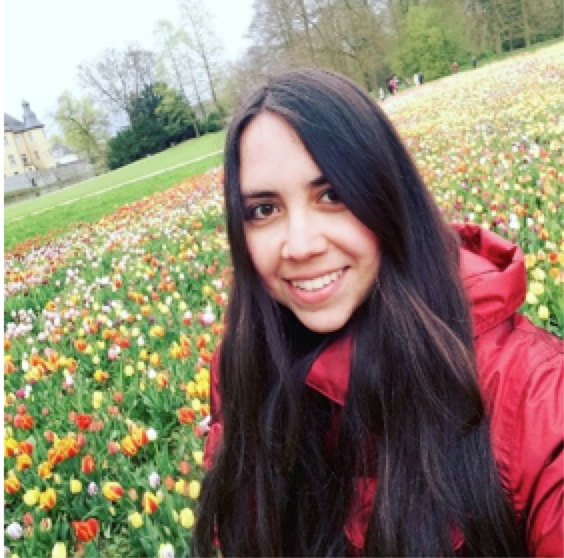
Ana Paula Wirth was born and raised in Mexico City. She studied psychology at the National Autonomous University of Mexico (UNAM) and is currently studying a diploma course in “Strategic Management of Human Resources.” Ana is currently an intern at the German Corporation for International Cooperation (GmbH), where she promotes corporate sustainability by working on gender equality and disability inclusion policies, and by planning activities to ensure her co-workers’ health and wellbeing.
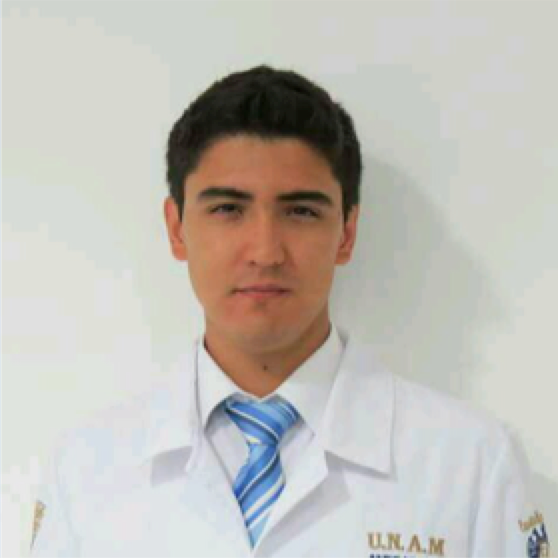
Andrés Quintero Leyra was born and raised in Mexico City. He is in his final year of medical school at the National Autonomous University of Mexico (UNAM) as Medical Passant in the Centre for Research in Politics, Population, and Health at UNAM. Andrés also is a EMT-Paramedic at the Mexican Red Cross and is currently working as the Statal Academic Coordinator for the Capacitation Area in the State of Mexico. He is an active member of the International Federation of Medical Students Associations and the Mexican Association for Medical Doctors in Formation.
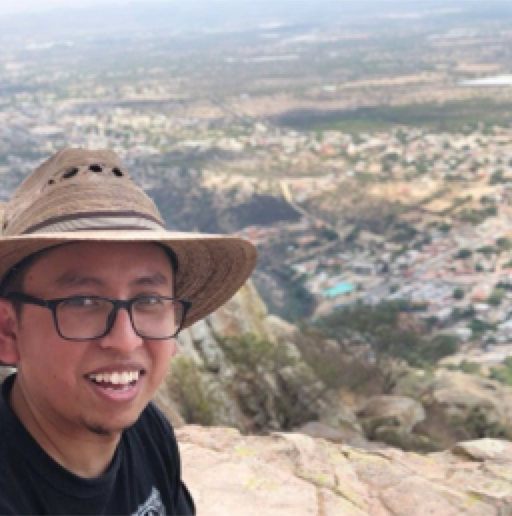
Nestor Emmanuel Ramírez Lugo was born in Queretaro in Mexico, he is currently a medical student at the National Autonomous University of Mexico (UNAM). Since 2017, he has served as a social volunteer on earthquake disasters in Mexico City. Nestor is a writer and collaborator of the Gaceta FacMed Journal of Medical Faculty of UNAM. He is interested in social and labor medicine and is a medical scholarship holder for the ADO group. He has been an active member of the Collective Aliis Vivere since its formation.
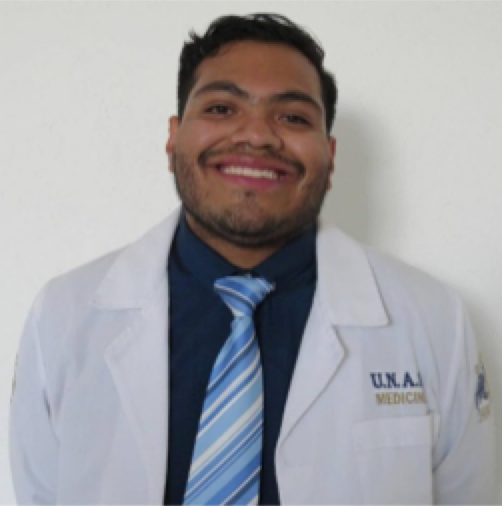
Jesús Abraham Hernández Cruz was born in Oaxaca and raised in Mexico City; he is currently a student of Psychology in the Metropolitan Autonomous University (UAM). He is also a Medical Doctor Passant in the rural community of Zacazonapan, State of Mexico. Jesús is a founder of the Collective Aliis Vivere and a former student representive for students in the Universitarian Council at the National Autonomous University of Mexico. He currently serves as a columnist at the digital magazine, Opinión Central and authors the column “Homestasis.”


